.
.
Photo William Gottlieb/Library of Congress
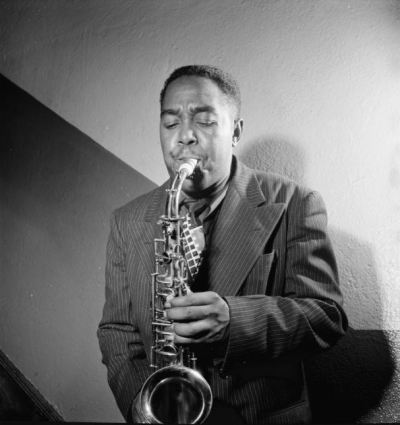
Charlie Parker is frequently found on the lists of noted critics and musicians answering the question, “What are 3 or 4 of your favorite jazz record recordings of the 1940’s?” This photograph by William Gottlieb was taken at Carnegie Hall in New York, c. 1947
.
__________
.
“Reminiscing in Tempo” is part of a continuing effort to provide Jerry Jazz Musician readers with unique forms of “edu-tainment.” As often as possible, Jerry Jazz Musician poses one question via e mail to a small number of prominent and diverse people. The question is designed to provoke a lively response that will potentially include the memories and/or opinion of those solicited.
Since it is not possible to know who will answer the question, the diversity of the participants will often depend on factors beyond the control of the publisher. The responses from the people who chose to participate in this edition are published below with only minor stylistic editing. No follow-up questions take place.
Recent editions have asked the question of a variety of noted critics and musicians, “What are 3 or 4 of your favorite jazz record albums of the 1960’s?” and “What are 3 or 4 of your favorite record albums of the 1970’s?” Because these questions were popular with our participants and our readers, we decided to ask a similar question of the 1940’s, and even posed the question to some of the same people.
.
_____
.
In this edition, we ask the question:
“What are 3 or 4 of your favorite jazz recordings of the 1940’s?“
.
*
.
(Many thanks to all of our participants, whose partial biographies accompany their response. Readers are invited to share their own lists by using the comments field at the conclusion of this feature)
.
.
________________
.
.
.
.
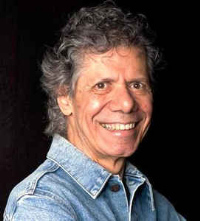
*
Jazz pianist; composer; has won over 20 Grammy Awards and been nominated over 60 times.
.
___
.
I used to listen to Miles as a 17 year old trumpeter playing with the Charlie Parker Quintet. My dad had the 78 rpm Dial recordings. Great music.
.
I.got a hold of a recording of Bartok’s “Concerto For Orchestra” by the Chicago Symphony that I loved – – could’ve been a little later..
Bud Powell’s solo piano recordings at that time were amazing too..
.
__________
.
.
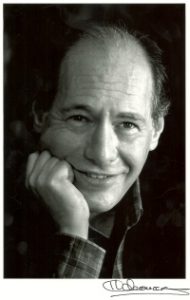
*
Critic; biographer; author of several books on jazz and film; six time recipient of ASCAP-Deems Taylor Award, Guggenheim Fellowship, and Peabody Award in Broadcasting
..
___
.
- The ‘40s were glorious years for jazz and, in particular, the nexus between jazz and pop, despite those damned recording bans. Three or four? Sorry, but here are 10 that cannot be missed:
- Count Basie, “Tickle Toe” (1940): Lester Young’s sublime composition and chorus. Did anyone surpass Pres on minor chords; his subtle modulation into the major to crest each eight-bars is grace personified.
- Charlie Christian, “Swing to Bop” (1941): Forget the meta title; it’s really “Topsy,” with the genius, booted along by Kenny Clarke, at his high-flying peak, never at a loss for ideas to knock you sideways.
- King Cole Trio, “What Is This Thing Called Love” (1944): I love his singing, too, but let us now praise a magnificent pianist and his superb guitarist Oscar Moore.
- Bing Crosby: “It’s Been a Long Long Time” (1945): The war generated great ballads, but this is the most sensual coming home song ever, inspiring Bing and his teammate Les Paul (plus bass and rhythm guitar).
- Charlie Parker, “Koko” (1945): Oh, say can you see by the dawn’s early light?
- Louis Armstrong, “Rockin’ Chair” (1947): RCA’s six tracks from Town Hall form a de facto six-part suite, beginning as Bobby Hackett parts the curtain for Supersatch, who disports himself in the wittiest of vocal duets with Jack Teagarden.
- Dizzy Gillespie, “Cubana-Be/Cubana-Bop” (1947): Conference of the Immigrants, or Dizzy in the land of Chano Pozo, choreographed by George Russell: a two-sided 78 that remains a modernist provocation.
- Stan Getz: “Diaper Pin” (1948): Stan charging alone through “Old Black Magic” changes, backed by a humming rhythm section: shrewd chords from Al Haig, deeply grooving brushes by Charlie Perry.
- Art Tatum, “Aunt Hagar’s Blues” (1949): God, in the house, raising W.C. Handy and the blues into the heavens.
- Something by Duke Ellington, Billie Holiday, Thelonious Monk, Bud Powell, Roy Eldridge, Coleman Hawkins, Mills Brothers, Woody Herman, Sarah Vaughan, Tadd Dameron, Benny Goodman, Artie Shaw, Lionel Hampton, Louis Jordan, or Ella Fitzgerald.
.
.
__________
.
.
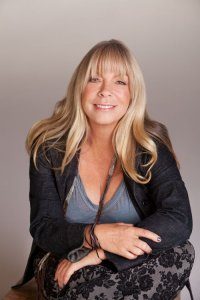
.
*
.
Two-time Grammy Award winner; vocalist; musician; songwriter; producer; actress
.
___
.
I’m going to limit the recordings to those released before 1970 and after 1940. Within that 30 years are many great recordings….As much as I like the earlier work or the later vocalists, my favorite three records are:
- “The High and Mighty Hawk.” Coleman Hawkins
I especially love the Hawks “My One and Only Love.” I found this melody so enchanting as a teenager that I memorized it and when I got the chance, recorded it as part of my Warner Brothers record deal. This musician’s playing is my favorite saxophone, and…that’s just how it is, it speaks to you or it doesn’t. Coleman was on the bridge…toward the new ‘rebop” of the 1950’s. He was a major name in the 1930’s, truly modern and for his time, loose and moving out of the melody with improvisation. But to the hipsters of the 50’s Coleman was an old man, old school, adhering to rules they no longer felt they needed at all.
Melody? Pshaw. But Coleman honored melody and then added his own ideas. The roots of improv are the roots of pop as well as jazz. Punk and modern jazz share a common disregard, pop and old jazz share a common grandmother – melody.
This record inspired me to seek other instrumentalists. Until the High and Mighty Hawk I had no interest in music without a singer.
2 “Sketches of Spain.”
Hard to pick the favorite Miles Davis record but this is a definitive piece of music. Gil Evans’ masterpiece and Miles Davis’ character defining music — the character that he was, in music and otherwise,
Was set free in this music. I love Miles Davis for what he doesn’t do as much as what he does. As a singer I look for musicians who sing, through their drum or reed or string. And I think the famous players do just that, they sing, they phrase what they say as if it were a sentence. If they don’t, it’s like musical masturbation, they are showing off for some guy somewhere, and the music, the whole of the music, is not made better for their solo. The great solos….from Jimi Hendrix to Joe Henderson. So Miles plays music I understand. I feel every note. He sings his notes, the perfect end or bend of the phrase, the texture, the control. And what he actually plays is loving, smart, simple. Only genius can go simple. Everybody else just plays extraordinary scales.
- Nina Simone
“I Loves You Porgy.”
My father had this record, (Nina on one side and Vince Guaraldi on the other). the orange cover with her facing the camera in a nice brightly colored cocktail type dress and her large mouth smiling. I was infatuated with her face as much as her voice. I had never heard anything like it, and it quite bothered me at first. Contralto. Low notes. But I was drawn to her. She was so emotional. Long languid phrases. Rather …classical piano playing. I heard her since I was, 7, 8 years old. When I was 21 I started experimenting with my own voice, besides just making fun of how much I liked her by imitating a line, I seriously started trying to explore the low resonating sounds in my skeleton. I let Nina hollah at ya at the end of “Coolsville” — my inner Nina. And as I have grown older I find she left her footprints for me in unexpected ways.
The courage — to explore with the tools of your own age, your own home, your own face, your own heart. A woman was here before me. I will be here before a future woman as well. The confidence to allow yourself that one thing — that you know what you are doing in this one place — I think is what makes a seminal singer. She certainly seemed confident about her unique self. And that was and remains a great map for me. I loves you Porgy, I have lived that story many times, loving a man no one else might notice, but he fills me with satisfaction and strength. In the end, I’m overcome by my own demon. “Black is the Color,” a meditation in pure spirit.
These are my favorite records, I guess, I think, they would come up in any list I would make. Any order really.
__________
.
.
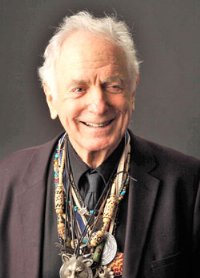
*
Composer; conductor; musician; author; recipient of multiple awards, including six honorary Doctorates; also known as Jack Kerouac’s musical collaborator
.
___
.
FOUR of my favorite recordings of music created and recorded the 1940s were:
#1 . Chano Pozo with Dizzy Gillespie And His Orchestra Historic Live Recordings 1948
When I met Dizzy in 1951 when he and his whole band crashed wherever they could find space in my basement apartment at 2601 16th NW in Washington DC, Dizzy sat up all night telling me how he had made Cubano Bop in 1947, when Chano Pozo arrived from Cuba and with Dizzy’s band until 1947. Dizzy helped change the face of Jazz. Like so many other people around the world, I was and still am blessed to have known him ever since we first met until he left us, and this collection shows his genius a virtuoso player.
#2 .Thelonious Monk “MONK’S MOODS” the original 1944-48 recordings
Like Beethoven, Bach and Bird, you can listen to Monk’s music your whole life and savor every note!! His compositions, with their stunning harmonies and voicings remain inspirational world-wide. For Monk’s Centennial, he is now being celebrated for what those lucky enough to know and spend time with him always knew. He was and remains a great musical artist who makes you listen, think, and feel the beauty that surrounds us and makes us want to dance, as long as we pay attention and LISTEN!
#3. Charlie Parker and Miles Davis “NOW’S THE TIME” 1945
In 1952 when Bird graced a group of us with his presence in two visits to my basement apartment for some jamming and homecooking, I asked Bird what it was like to have written and recorded a tune in 1945 that had become a classic by 1952.
“Now was, is, and always will be the time” said Bird, “because Now is the RIGHT time”
All the things we hear all these years later which Bird played all reflect his devotion to the sanctity of the moment. And he always took the time to encourage young struggling musicians and artists of all genres to work hard, respect those who came before us, share whatever blessings you had with others and respect every person who crossed your path.
#4. Billie Holiday and Lester Young “A Musical Romance” from late 1930’s to mid 40’s
During the final years at the end of the Great Depression, Prez and Lady Day graced America and the World with true harmony and musical partnership that remains a model for all musicians of every cultural origin and all people who work together to see how rewarding it is to LISTEN and follow the two golden Rules of music-making which their collaborations personified:
A. Less is more
B. When in doubt….leave it out!!
#5 .Richard Tucker and Bidú Sayão “LA BOHEME” Puccinni’s Opera Live at the Metropolitan Opera 1949
In the beginning of 1954, Gunther Schuller heard me playing french horn in a jam session at the Jazz Kellar in Frankfort Germany, a basement bar, when I was still in the Army. He was strolling by while visiting Germany. He told me that although he didn’t improvise, he loved jazz and had played written parts with Miles on the recording “Birth of the Cool” and that if I came back to the USA, he would be my french horn teacher and get me into Manhattan School of Music. He became my french horn teacher, encouraged me to keep being an improviser AND a classical composer and gave me the recording of this beautiful opera, where he was the first horn player of the Met Opera Orchestra so that I could hear his great expressive horn playing, along with the soulful singing of Richard Tucker and Bidú Sayão.
He became a lifelong friend and an ambassador for bringing jazz into its rightful place as great music built to last which should be part of everyone’s life.
These are recordings from the 40’s that have enriched my life and the lives of people I have met all over the world who treasure them and are inspired to create their OWN music as a result of hearing these various masters all telling their stories in sound from the heart!!
Thank you Joseph for all you do to spread the word and the light by helping people to feel welcome and at home in the beauty part of the world that jazz celebrates!!
Jerry Jazz is a joy to read!
Fashions and fortunes may come and go, but as the poet John Keats, 19th Century England’s great free-styler said …”A thing of beauty is a joy forever”.
David Amram
(promising young composer)
.
.
__________
.
.
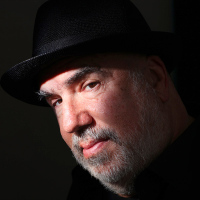
*
Grammy Award-winning trumpeter and flugelhornist; composer
.
___
.
- Lennie Tristano: Crosscurrents (1949)
- Duke Ellington: Liberian Suite (1949)
- Lee Konitz: Subconscious-Lee (1949)
- Coleman Hawkins: Rainbow Mist (1944)
- Any Charlie Parker Record
- Miles Davis: Birth of the Cool (1949)
__________
.
.
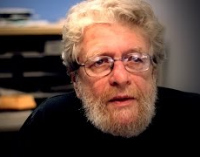
*
Grammy Award-winning jazz record producer; leading discographer, Blue Note Records; co-founder, Mosaic Records
.
___
.
“Well You Needn’t” – Thelonious Monk (Blue Note)
The idiocyncratic pianist-composer sounding fully formed and transcendent. Blakey is perfect on this performance.
“Ko Ko” – Charlie Parker (Savoy)
It’s insane to pick just one Bird performance but this is a masterpiece from start to finish.
“I’ll Be Seeing You” – Billie Holiday (Commodore)
This song brings out all the melancholy and pathos that Lady Day could bring to a performance. Untouchable.
“Sweet Lorraine” – Sidney Bechet and Muggsy Spanier (HRS)
They only recorded four songs together at this one session, but what beauty and chemistry.
Anything and everything by the Nat King Cole Trio (Capitol)
.
.
__________
.
.
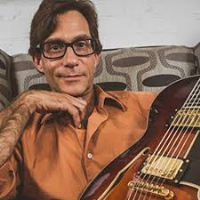
*
Jazz guitarist; composer; producer; author
.
___
.
My top 3:
Lester Young, Nat King Cole and Buddy Rich trio – 1946
The King Cole Trio – mid 40’s
Sonny Stitt and Bud Powell: half recorded in 1949, other half was recorded Jan, 1950
Release Date 1950
Recording Date
December 11, 1949 – January 26, 1950
.
.
__________
.
.
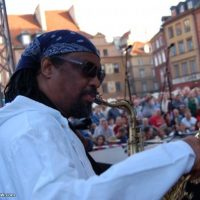
*
Musician; composer; leader; producer
.
.
___
.
.
Duke Ellington – “Don’t Get Around Much Anymore”, “Liberian Suite”, “Black, Brown and Beige”
Thelonious Monk – “Round Midnight”
Charlie Parker – “Confirmation”, “Donna Lee”
.
.
__________
.
.
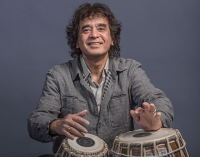
*
Indian table player in Hindustani classical music; music producer; composer; film actor
.
___
.
It is very hard to pin point just a few songs from the 1940s because there was incredible music being made up and down the aisle. Big Bands were the toast of all cities with fabulous singers fronting them, there was however a smaller band with an amazing singer that shines through “Billie Holiday with Lester Young” a great collection of songs. There was “Charlie Parker with Strings” towards the end of the decade with some of the best emotive solos by the maestro. A stunning “Sentimental Journey” by Doris Day. There was an exciting rendition of “How High the Moon” on a TV show by June Christy backed up by Nat King Cole on the piano (great solo) and Mel Torme on the drums. Jimmy Dorsey arrived on “Chattanooga Choo Choo” and finally Benny Goodman and his band backing the great Peggy Lee in a jaw dropping rendition of “Why Don’t You Do Right”
.
.
__________
.
.
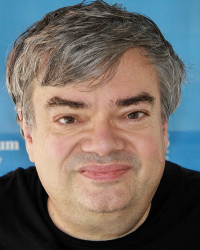
*
Drama critic of The Wall Street Journal and the author of Pops: A Life of Louis Armstrong and Duke: A Life of Duke Ellington. Satchmo at the Waldorf, his first play, opened in 2011 and has since been produced off Broadway and throughout America.
.
___
.
What you ask is, of course, impossible, and I’ve chosen to make it more so (if impossibility can be measured in degrees) by picking just four 78 sides, two fast and two slow, to stand for the whole protean world of American jazz in the Forties. Stylistically speaking, these four records couldn’t be more different, yet they’re all jazz, and few weeks go by without my listening to one or more of them. Needless to say, I could just as well have chosen four totally different sides—I can’t easily imagine life without Louis Armstrong, Sid Catlett, Charlie Christian, Benny Goodman, Coleman Hawkins, and Art Tatum, to list only the most obvious omissions—but these thirty-five giants will suffice for now:
Duke Ellington and His Famous Orchestra, “Harlem Air-Shaft” (Victor, 1940)
Wallace Jones, Cootie Williams, and Rex Stewart, trumpet
Lawrence Brown, Joe Nanton, and Juan Tizol, trombone
Barney Bigard, clarinet
Johnny Hodges, Otto Hardwicke, alto saxophone
Ben Webster, tenor saxophone
Harry Carney, baritone saxophone
Duke Ellington, piano and composer
Fred Guy, guitar
Jimmie Blanton, bass
Sonny Greer, drums
Bud Freeman and His Famous Chicagoans, “Jack Hits the Road” (Columbia, 1940)
Max Kaminsky, cornet
Jack Teagarden, trombone and vocals
Pee Wee Russell, clarinet
Bud Freeman, tenor saxophone
Dave Bowman, piano
Eddie Condon, guitar
Mort Stuhlmaker, bass
Dave Tough, drums
Kansas City Seven, “Destination K.C.” (Keynote, 1944)
Buck Clayton, trumpet
Dicky Wells, trombone
Lester Young, tenor saxophone
Count Basie, piano
Freddie Green, guitar
Rodney Richardson, bass
Jo Jones, drums
Original Charlie Parker Quintet, “Embraceable You” (Dial, 1947, take 1)
Charlie Parker, alto saxophone
Miles Davis, trumpet
Duke Jordan, piano
Tommy Potter, bass
Max Roach, drums
.
.
__________
.
.
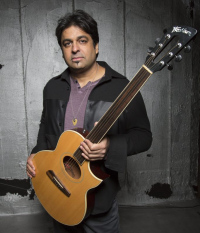
*
Jazz guitarist; composer; record producer
.
___
.
Here are a few. I’m sure there are plenty more but these stand out. Thanks for asking.
Diz ‘n Bird at Carnegie Hall
Lennie Tristano Crosscurrents
The Indispensable Django Reinhardt
Mary Lou Williams The Zodiac Suite
.
.
__________
.
.
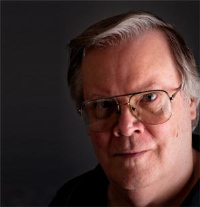
*
Producer; discographer; writer; radio presenter; Blues Hall of Fame inductee
.
___
.
In no particular order:
Duke Ellington – “Cottontail”
Lionel Hampton – “Flyin’ Home” (1942 version)
Lester Young – “Sometimes I’m Happy”
Charlie Parker – “KoKo”
.
.
__________
.
.

*
Guitarist; producer; soundtrack composer
.
___
.
Being a guitarist my favorite 3 or 4 jazz recordings from the 1940’s actually appear on this Charlie Christian recording:
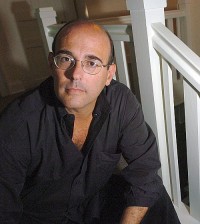
*
Author of 12 books on American music as novelist and essayist; Grammy award winning writer for album notes to Martin Scorsese Presents the Blues: A Musical Journey; principal writer for the HBO series Treme
.
___
.
The 1940s saw landmark recordings by Duke Ellington, Lester Young, Billie Holiday, and many others who had come to prominence in the preceding decades, but the decade makes me think of small-group bop first, so here are a few of my favorites:
“Warming Up A Riff” – This 1945 Charlie Parker cut fades in with Bird wailing away on the chords of “Cherokee,” presumably as a warmup to recording “Koko” later that day. The easier tempo really brings out Bird’s most swinging and imaginative side. Dizzy Gillespie plays piano on this. At one point Bird quotes ingeniously from “Cocktails for Two,” then transposes the phrase up to fit the next chord change and you can hear Dizzy laughing in appreciation.
“The Tadd Walk” – the arranger Tadd Dameron featured trumpeter Fats Navarro in his groups throughout the late 1940s. This 1947 side, based on the chords of “Sunday,” has two blisteringly inventive choruses by Navarro, cup-muted, and a great solo by the much-underrated altoist Ernie Henry.
“Professor Bop” – Vocalist Babs Gonzalez really lays down the ool-ya-koo on this 1949 paean to bebop style both musical and sartorial. Sonny Rollins is already identifiable in one of his first solos on record, and there’s an enticing 16 bars from the too-little-known French Horn player Julius Watkins.
One Night At Birdland – Even though it’s a little late to the 1940s party (by only five months), this document of a May 1950 session at the famed nightclub is for me the high water mark of bebop, with Bird, Fats Navarro, and Bud Powell, all in fire-breathing form – especially Powell, whose solos on “Ornithology,” “I’ll Remember April,” “The Street Beat,” and the other tracks are definitive. Art Blakey’s drums are more or less apocalyptic, too.
I see that some commentators have felt free to go long, so here, for good measure, are two big band sides worth hearing over and over, both of which still have some elements of swing clinging to them, to very good effect. “Disorder At The Border,” a 1944 side by a Coleman Hawkins-led big band, features Dizzy Gillespie on trumpet and an anthology of background riffs – one lifted from the Jay McShann record of “The Jumpin’ Blues” and a couple that turned up ten years later behind Lucky Thompson’s tenor solo on Miles Davis’ 1954 recording of “Blue N’ Boogie.” And I especially love 1945’s “Something For You” by Oscar Pettiford’s All Stars, a band that justifies its name, including the great bass-playing leader along with Dizzy Gillespie, Bill Coleman, Trummy Young, Vic Dickenson, Don Byas, Serge Chaloff, and pianist Clyde Hart, among others. Don Byas plays a fine solo, but Dizzy’s solo – over heavily swinging riffs, with Shelly Manne’s drums booting him on – makes any day a good one.
.
.
_________
.
.

Arya F. Jenkins
*
Arya F. Jenkins is a poet and writer (and contributing writer for Jerry Jazz Musician). Her jazz-inspired short story collection, BLUE SONGS IN AN OPEN KEY, has just been published.
.
___
.
Celebrating Favorite 40s Jazz Standards:
Epistrophy, ‘Round Midnight, C Jam Blues, Autumn Leaves
By Arya F. Jenkins
I am sure I will not be the first to note how challenging it is to narrow one’s likes to only a handful of picks when referring to jazz of the 1940s, which marked not only the shift to bebop or “musicians’ music,” but also what I would term, “writers’ music.” Numerous writers, most notably the Beats, have used jazz of this period as inspiration.
“Epistrophy,” composed in 1941 by Thelonious Monk and Kenny Clarke, is classic Monk, epitomizing both in its musical and titular play the spectacular nonsense for which this genius was known. There is no such word as “Epistrophy,” although epistrophe is defined as a kind of repetition, which Monk utilized in this dissonantly cool tune. “Epistrophy,” the second track on the second side of the 1961 album, Thelonious Monk with John Coltrane, is a must listen for any jazz aficionado, student of bebop or Monk.
Monk, the high priest of bebop, is considered an originator of bebop, although his idiosyncratic style harkens more to the swing era. His early 1940s tune, “‘Round Midnight,” may have actually been composed in the mid ’30s while he was still a teenager. A popular and frequently recorded jazz standard, “’Round Midnight” is also the title tune of the beautiful, rueful 1986 film of the same name starring saxophonist Dexter Gordon. Singer Ella Fitzgerald performed a wonderful version, with lyrics by Bernie Hanighen.
Another ’40s favorite is “C Jam Blues,” composed by Duke Ellington in 1942. A great rollicking tune in C major, it follows a 12-bar blues form and features solo improvisations. The quintessential version, available via YouTube, features pianist Oscar Peterson in Denmark in 1964 performing it with his characteristic boundless vigor and delight alongside Ray Brown on bass and Ed Thigpen on drums.
“Autumn Leaves” was originally a French song, “Les feuilles mortes,” or “The Dead Leaves,” composed by Joseph Kosma with lyrics by poet Jacques Prévert. American songwriter Johnny Mercer adapted it to English in 1947. Notable versions are the one by French songbird Edith Piaf, who performed it in French and English on Christmas Eve 1950, and Nat King Cole’s performance in the film (of the same name), starring Joan Crawford.
My favorite instrumental rendition of “Autumn Leaves” is in Ballads and Blues, a collection of Miles Davis’s ballads released in 1996 and recorded between 1950 and 1958. Sexy and rich with story, this version features Miles Davis on trumpet, Cannonball Adderley on sax, Hank Jones on piano, Sam Jones on bass, and Art Blakey on drums. Also worth noting is singer Eva Cassidy’s extraordinary, haunting rendition on guitar.
.
.

*
Musicologist; Duke University professor; author; 2009 Guggenheim Fellowship recipient
.
___
.
“Cotton Tail” (composed by Ben Webster), recorded by the Duke Ellington Orchestra
“Take the A Train” (by Billy Strayhorn), recorded by the Duke Ellington Orchestra
“C Jam Blues” (composed by Barney Bigard), recorded by the Duke Ellington Orchestra
.
.
__________
.
.
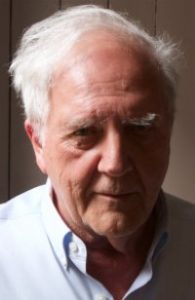
*
John M. Musser Professor Emeritus of Anthropology, African American Studies and Film Studies at Yale University; research scholar, Columbia University; author; biographer.
.
___
.
As a child of the 50’s I listened to a lot of music with my mother who was only 18 when she had me and my father was fighting in the Korean War. I was her best friend and there was so much music we listened to and enjoyed together. Among my favorites are many by Louis Jordan and Billie Holiday. In trying to narrow down the songs I liked, I thought of those that were not the most played during that period. I have narrowed my selections down to these four, which was a difficult task.
Louis Jordan, G.I. Jive
Charlie Parker, Groovin High
Billie Holiday, Ghost of Yesterday
Duke Ellington, Nothing Till You Hear From Me
.
.
__________
.
.
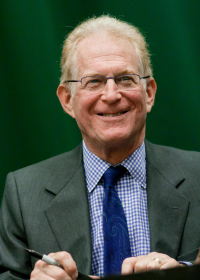
Bob Blumenthal
*
Critic; historian; educator; producer; Grammy Award-winning writer
.
___
.
Here’s what came to mind first:
Charlie Parker, “Warming Up a Riff” (1945) – An incomplete take on “Cherokee” changes, from the session that produced the far more famous “Ko-Ko.” I prefer this one, which is less virtuosic but has great interaction between Parker and Dizzy Gillespie’s piano, a world of ideas that became common bebop coin, and a sensational group feeling. In the same vein, honorable mention to another outtake from the same session, “Meanderin’,” a worthy complement to the more famous “Embraceable You” of two years later.
Dizzy Gillespie, “Cool Breeze” (1947) – Tadd Dameron’s chart starts with Gillespie’s solo from “Disorder at the Border,” works in Dameron’s own “The Squirrel” behind Big Nick Nicholas’s tenor solo, and has my favorite flag-waving moment of all time when the brass shout the theme at the reprise, after which Dizzy takes it higher.
Lester Young, “D.B. Blues” (1945) – The AABA “blues with a bridge” structure is one of my favorites, and Pres defined it here. His opening chorus is miraculous, and Vic Dickenson and Dodo Marmarosa are also stellar.
Duke Ellington, “Harlem Air Shaft” (1940) – I’m one of those folks who believe that the ought years are really the finale of the previous decade, but I’ll nod to convention in order to include my favorite three-minute example of how Duke could portray a community in sound.
.
.
.
.









































Very neat to read this! If I might chime in with mine:
1) Boyd Raeburn and His Orchestra, Raeburn’s Theme
2) Benny Goodman, Pic-a-Rib (1939 but very close…)
3) Chubby Jackson, Lemon Drop
4) Nat Cole, Ooh, Kickeroonie
5) David Allyn, It Shouldn’t Happen in a Dream
6) Marilyn Maxwell, Do You Know What It Means to Miss New Orleans
Interesting list, Richie…I am struck by how many folks have chosen Nat Cole. Your choice is particularly interesting.
Click on this link to hear “Kickeroonie”
https://www.youtube.com/watch?v=7ZRvVFQY2H8